
In recent years, the West has again awakened interest in the genus Sempervivum, to its hybridization and obtaining new forms. Previously, this was noted in the early twentieth century, then in 60-70 years, and now a new wave covers Europe. Associations of fans of these plants are created. Every year more and more new varieties are issued.
Most of the “epidemic” has spread in Germany, where individual collections range from hundreds to several thousand plants. In principle, this is not surprising, because everything is developing in a spiral, and, apparently, a new generation of people infected with this “virus”has grown. And interest in” mystical roses ” never completely faded.
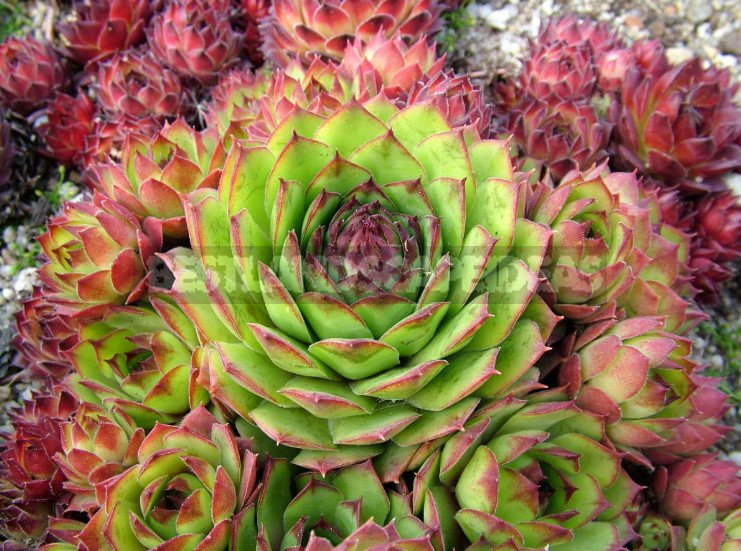
Traces of this interest can be traced back to ancient times. Roman agronomists used Sempervivum juice to control pests of cultivated plants. Later, in the middle ages, we observe mass attempts to use their mystical essence. It was widely believed that planted on the roof, they are able to protect the house from lightning strikes. Charlemagne even issued a decree obliging his subjects to use Sempervivum for this purpose.
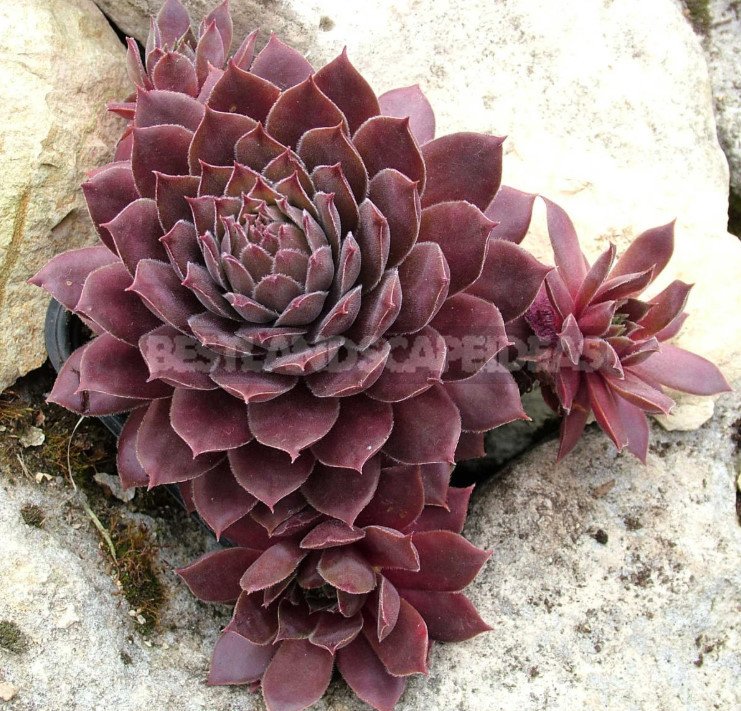
Another famous Carl-Linnaeus calls one of the most common types of Sempervivum tectorum. The most obsessed mystics hung these plants in the pipes of their homes, in order to prevent the penetration of evil spirits in the home.
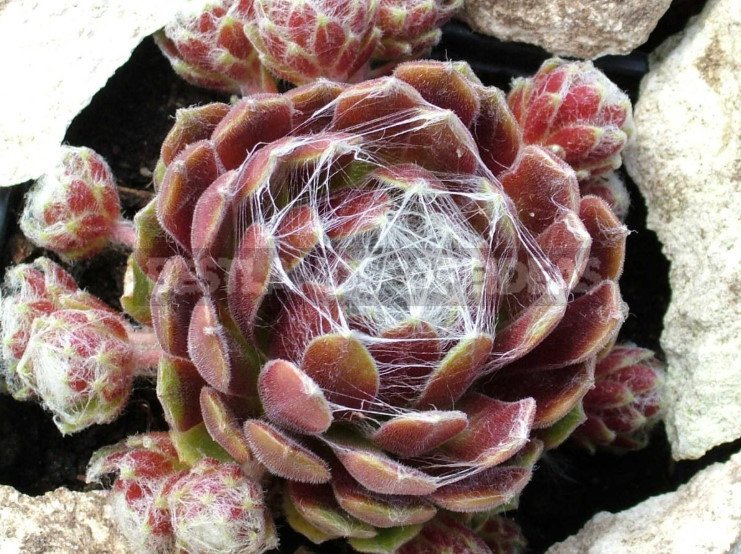
Not spared Sempervivum their attention and then medicine. I was treated with juice, decoctions and ointments based on them. These are skin diseases, insect bites, eye ulcers, burns, pain in the ears and teeth. Insistence on wine drove worms and even increased male potency. To list all the areas where Sempervivum can be applied and smeared, in my opinion, is simply impossible. Although extracts from Sempervivum tectorum are part of individual homeopathic remedies in our time, I strongly recommend not to check them for yourself.

Genus Sempervivum, which has up to 60 species. It is difficult to imagine another such a plant, which would combine such an exotic beauty with amazing unpretentiousness and Spartan endurance. Stone scree and crevices in the rocks, sandy or clay soil, and often its almost complete absence, open sun and periodic lack of moisture — everywhere they are comfortable. If we add “live birth” and take into account that they are able to winter under the snow at 30 degrees below zero, it becomes clear why Sempervivum is interested in thousands of enthusiasts around the world.

But still the main thing that attracts collectors of these plants is the shape and color of the sockets. Their color is yellow and green, gray and gray, pink and purple, red, orange and brown, and sometimes – almost black. Moreover, it can move from one to another from the center of the outlet to the tips and from the middle of the sheet to its edges, or even have bright strokes of a different color.
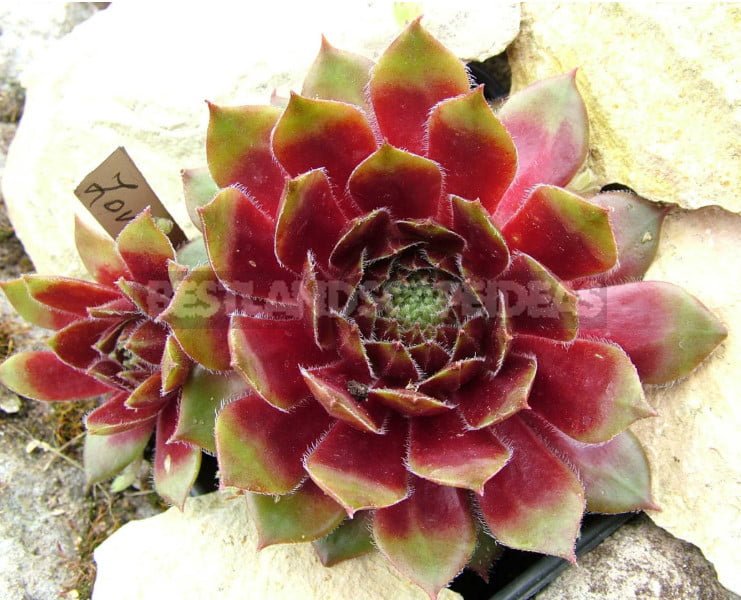
Very often, the edges of the sheet are covered with a fringe of silvery hairs, emphasizing the clarity of the rosette pattern. The very surface of the sheet is glossy or matte, as if powdered, or slightly pubescent. Significantly different and the shape of the leaves, ranging from elongated and narrow to wide and rounded. Some Sempervivum leaf tips carry bundles of long thin hairs that cover them like a web.
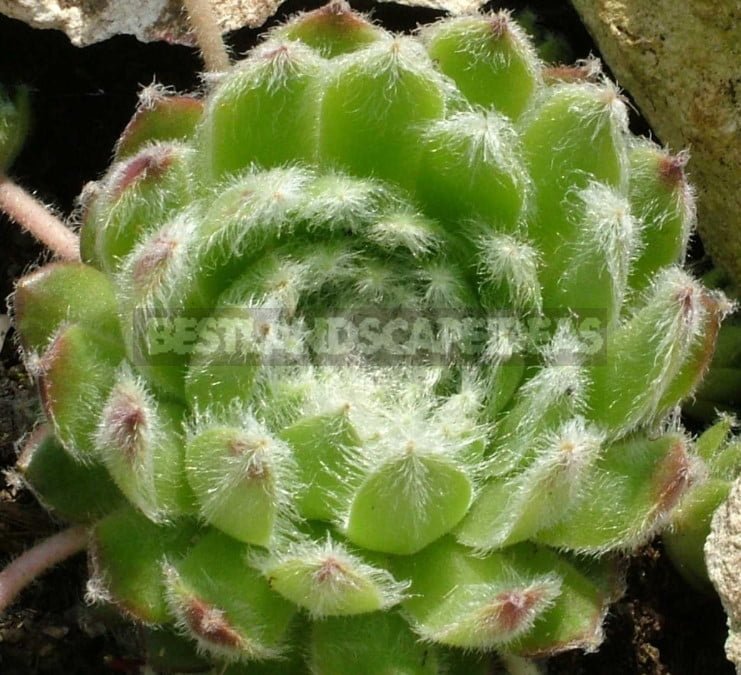
But the color and shape of the leaves vary not only from species to species and from variety to variety. The season also contributes to the metamorphosis of Sempervivum. Many of them are much brighter in the spring and in the first half of summer, while there are those that are gaining color by autumn. Can strongly affect the color and type of soil, weather conditions and even the age of each individual outlet. Had to deal with hard-to-explain changes color.
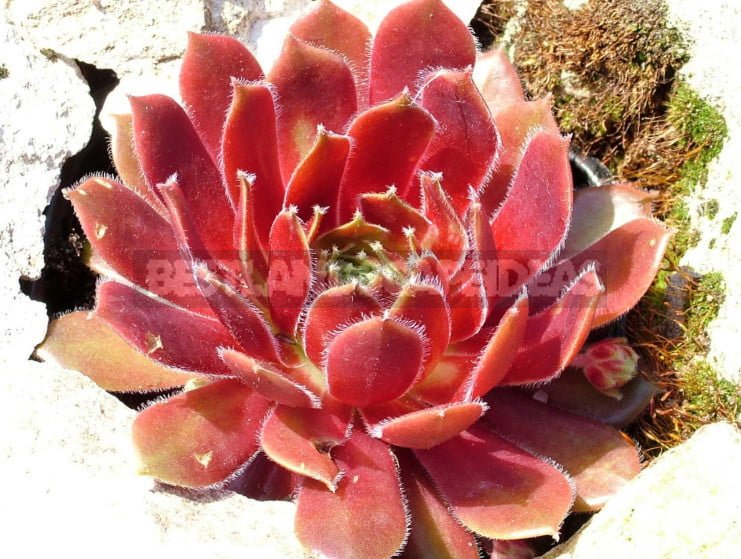
The stone roses – monocarpic, that is, they bloom once in a lifetime and die. Fortunately, this applies only to each specific outlet. A lot of outlets, they are all of different ages and therefore bloom, of course, not at the same time. So the loss of the faded “rosettes” visible for a short time, their place is quickly occupied the young plants.
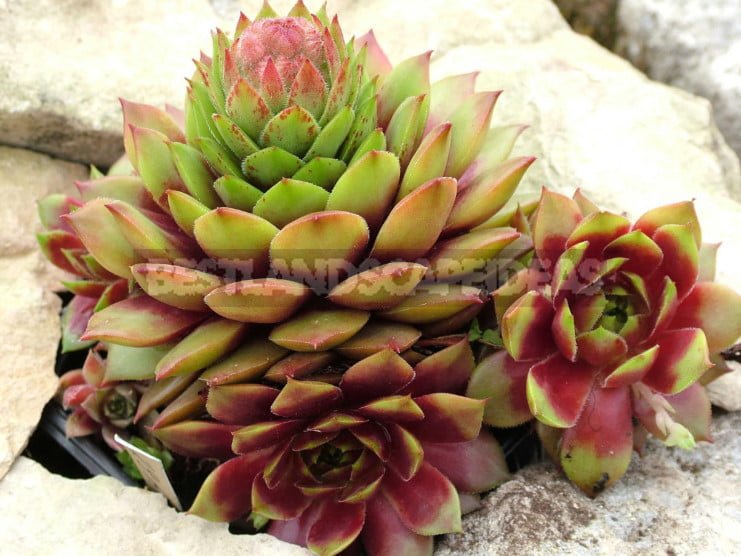
The flower in Sempervivum is open, consists of 10-15 petals. They are usually painted in different shades of red, pink and purple, often with a brighter stripe in the center of the petal. There are also species with flowers of white, cream and yellow color.
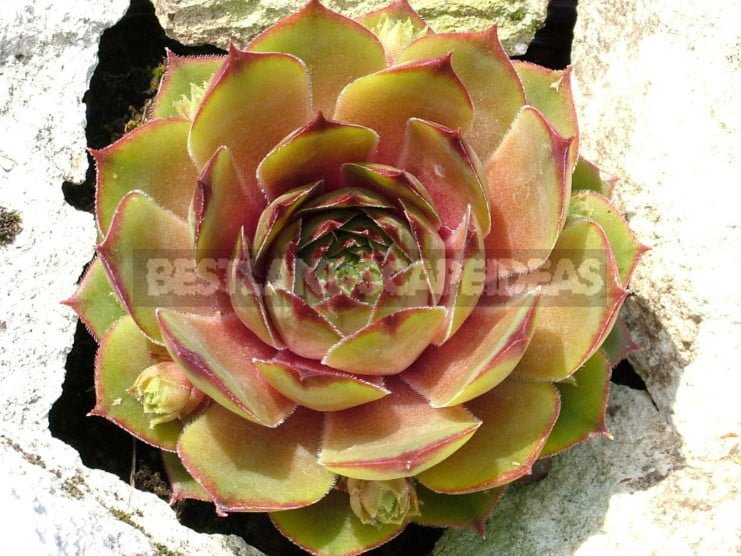
Sempervivum grows well on almost any soil. The most open, Sunny place and the absence of waterlogging are two main conditions for their comfortable life. It makes no sense to plant Sempervivum in full shade, especially in a damp place. Quite quickly, they will lose their varietal characteristics and turn into the notorious “cabbage” pale green.
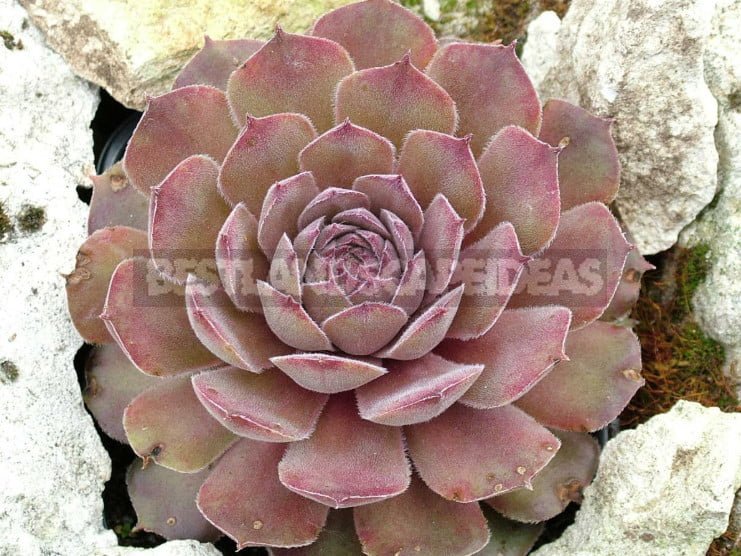
Sempervivum-beautiful plants, the nature intended for rock gardens and stone placers. In addition, they are an indispensable attribute of containers and vases. Complete disregard for the amount and composition of the soil makes them the main contenders for planting in any capacity and on the Sunny side of the retaining walls. The main criterion for these landings will be the taste of the owner, since the color palette of Sempervivum is limitless.
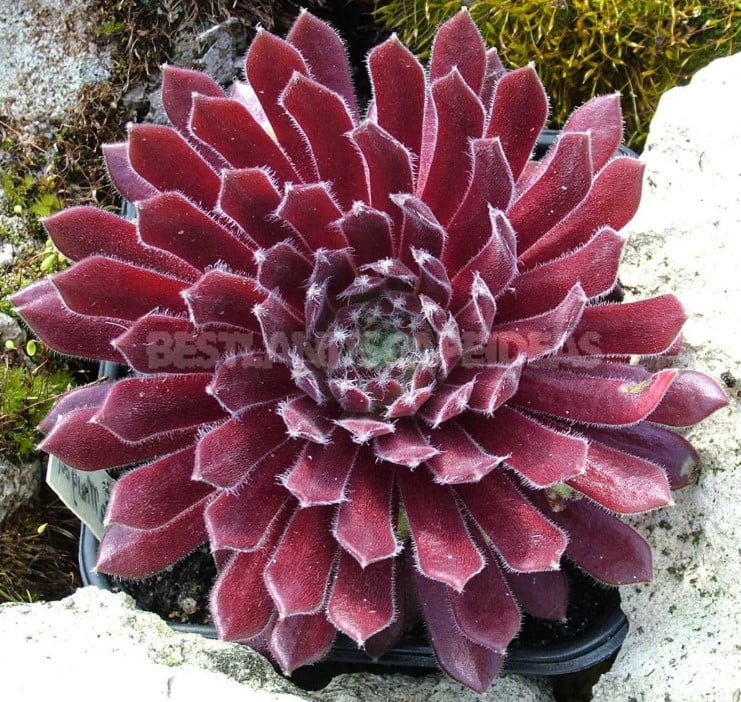
The only advice that can be given for such plantings is to take into account the seasonal change in color of plants. For example, there are varieties that retain their basic color throughout the season. These include: ‘Rubin’, ‘Сommander Hay’, ‘Mount Hecla’, ‘Red Lion’, ‘Rubrifolium ornatum’, ‘Video’, ‘Zepherin’, ‘Atroviolaceum’. In combination with pubescent varieties: ‘Arachnoideum Jubilee’, ‘Hookeri’, ‘Red Papaver’, ‘Shirley Temple’, ‘Silver Thaw’ and varieties of other colors can be achieved to make your composition look great throughout the season. A little imagination and a lot of sun will pleasantly surprise your garden guests.
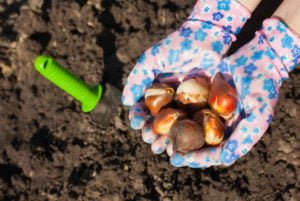
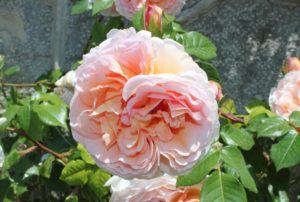


Leave a Reply